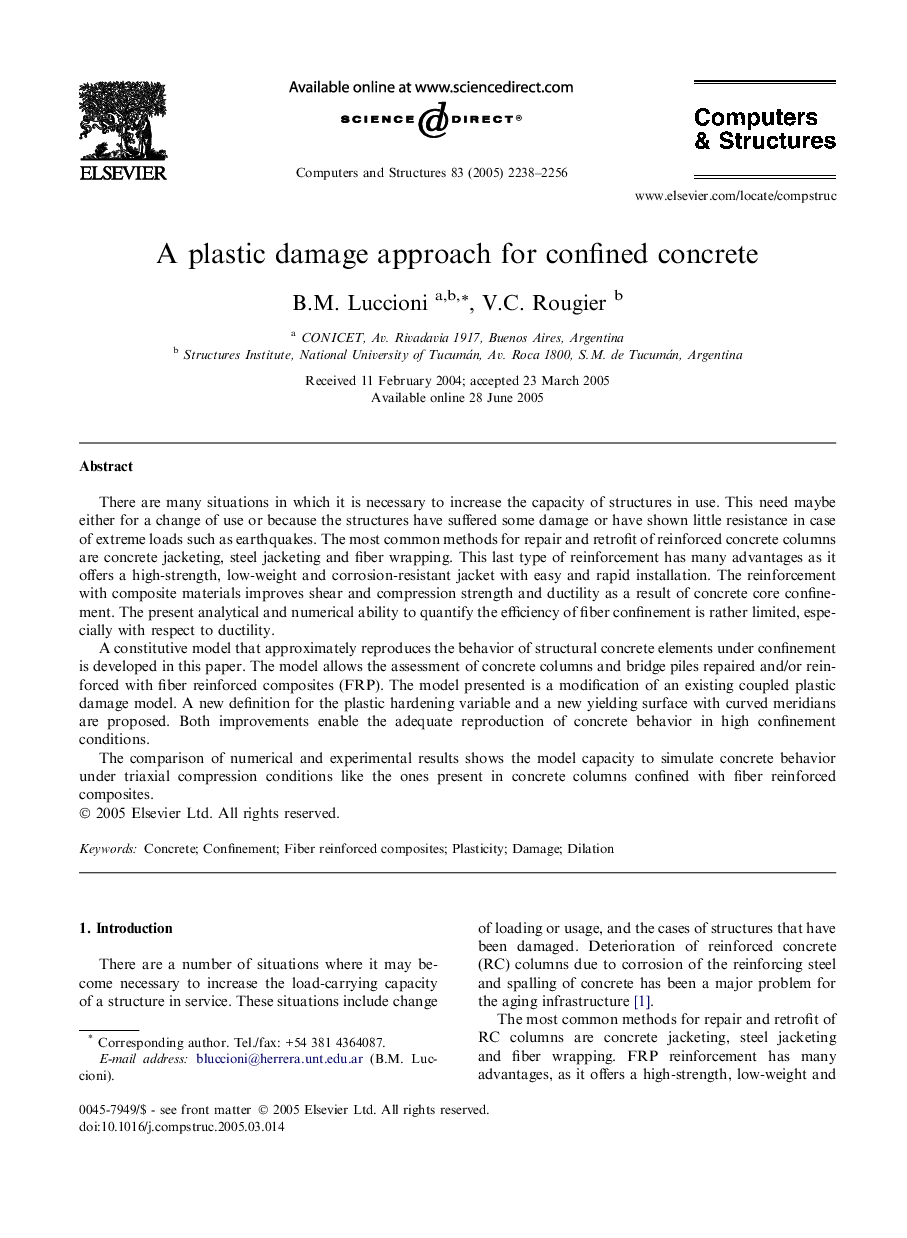| Article ID | Journal | Published Year | Pages | File Type |
|---|---|---|---|---|
| 511378 | Computers & Structures | 2005 | 19 Pages |
There are many situations in which it is necessary to increase the capacity of structures in use. This need maybe either for a change of use or because the structures have suffered some damage or have shown little resistance in case of extreme loads such as earthquakes. The most common methods for repair and retrofit of reinforced concrete columns are concrete jacketing, steel jacketing and fiber wrapping. This last type of reinforcement has many advantages as it offers a high-strength, low-weight and corrosion-resistant jacket with easy and rapid installation. The reinforcement with composite materials improves shear and compression strength and ductility as a result of concrete core confinement. The present analytical and numerical ability to quantify the efficiency of fiber confinement is rather limited, especially with respect to ductility.A constitutive model that approximately reproduces the behavior of structural concrete elements under confinement is developed in this paper. The model allows the assessment of concrete columns and bridge piles repaired and/or reinforced with fiber reinforced composites (FRP). The model presented is a modification of an existing coupled plastic damage model. A new definition for the plastic hardening variable and a new yielding surface with curved meridians are proposed. Both improvements enable the adequate reproduction of concrete behavior in high confinement conditions.The comparison of numerical and experimental results shows the model capacity to simulate concrete behavior under triaxial compression conditions like the ones present in concrete columns confined with fiber reinforced composites.
